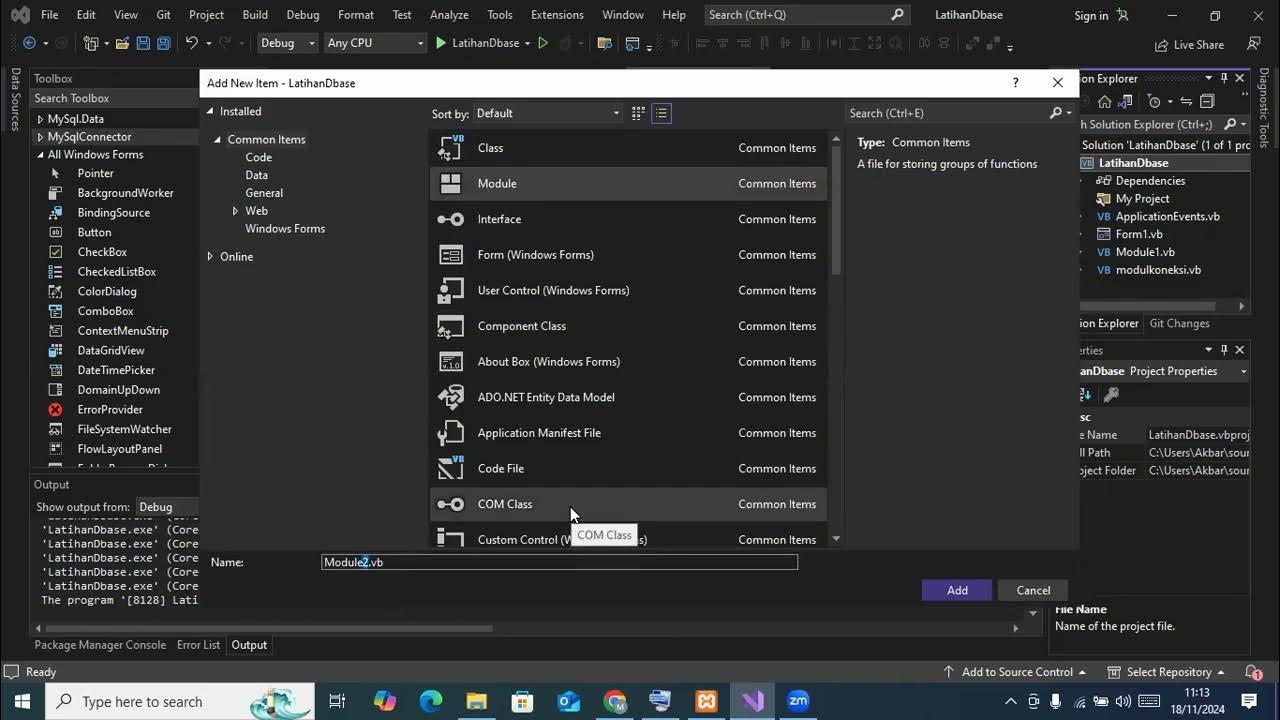String Functions in MySQL | Intermediate MySQL Series
Summary
TLDRThis lesson explores various string functions in MySQL, essential for manipulating and analyzing textual data. The instructor introduces functions like 'length' for determining string length, 'upper' and 'lower' for case conversion, 'trim' for whitespace removal, 'left', 'right', and 'substring' for extracting parts of strings, 'replace' for character substitution, and 'locate' for finding character positions. The 'concat' function is highlighted for merging multiple columns into one, demonstrating its utility in standardizing data and extracting specific information, such as birth months from dates.
Takeaways
- 📚 The lesson covers various string functions in MySQL that are essential for working with and manipulating strings within a database.
- 🔢 The 'LENGTH' function is used to determine the number of characters in a string, which can be useful for data validation, such as ensuring phone numbers are exactly 10 characters long.
- 🔠 The 'UPPER' function converts all characters in a string to uppercase, while 'LOWER' converts them to lowercase, which aids in standardizing text data.
- 📝 'TRIM', 'LTRIM', and 'RTRIM' functions are used to remove unnecessary whitespace from the beginning, end, or both sides of a string, respectively.
- 📌 'LEFT' and 'RIGHT' functions extract a specified number of characters from the beginning or end of a string, but are less flexible compared to 'SUBSTRING'.
- ✂️ 'SUBSTRING' is a versatile function that allows for extracting a specific part of a string by specifying a starting position and the number of characters to include.
- 🔄 The 'REPLACE' function is used to substitute specific characters within a string with other characters, which can be useful for data cleaning.
- 🔎 'LOCATE' function finds the position of a substring within a string, which can be helpful for identifying patterns or specific sequences in data.
- 🔗 'CONCAT' function combines multiple columns into a single column, which is particularly useful for creating a full name from first and last names or merging other related data.
- 📈 The video provides practical use cases for each function, demonstrating their application in real-world data management and standardization tasks.
- 🎓 The instructor also mentions additional lessons on numeric functions, date and time functions, and data type conversions, which are part of a broader curriculum on MySQL functions.
Q & A
What are string functions in MySQL?
-String functions in MySQL are built-in functions designed to manipulate and work with strings in various ways, such as finding their length, converting case, trimming spaces, and extracting substrings.
What does the LENGTH() function do in MySQL?
-The LENGTH() function in MySQL returns the length of a string, which can be used to determine the number of characters in a given text.
How can you use the LENGTH() function to validate phone numbers?
-You can use the LENGTH() function to ensure that phone numbers are exactly 10 characters long. If any phone number has more than 10 characters, it indicates a potential issue in the data cleaning process that needs to be addressed.
What are the UPPER() and LOWER() functions used for?
-The UPPER() function converts all characters in a string to uppercase, while the LOWER() function converts all characters to lowercase. These functions are useful for standardizing text data.
Can you explain the purpose of the TRIM() function?
-The TRIM() function is used to remove any leading and trailing whitespace from a string. It helps in cleaning up data by eliminating unnecessary spaces at the beginning or end of a text.
What is the difference between LEFT(), RIGHT(), and SUBSTRING() functions?
-LEFT() extracts a specified number of characters from the left side of a string, RIGHT() does the same from the right side, and SUBSTRING() allows for extracting a portion of a string starting from a given position and spanning a certain number of characters.
How can the SUBSTRING() function be used to extract a specific part of a date?
-The SUBSTRING() function can be used to extract a part of a date by specifying the starting position and the number of characters to extract. For example, to get the month from a standardized date string, you can start at the sixth position and extract two characters.
What does the REPLACE() function do in MySQL?
-The REPLACE() function in MySQL is used to replace specific characters in a string with other characters. It takes the original string, the character or substring to be replaced, and the new character or substring to be used as replacements.
How can the LOCATE() function help in identifying patterns within strings?
-The LOCATE() function searches for a specified substring within a string and returns the position where the substring is found. It can be used to identify patterns or specific sequences within text data.
What is CONCAT() used for in MySQL?
-The CONCAT() function in MySQL is used to combine multiple columns or strings into a single string. It is particularly useful for creating a full name from first and last name columns or merging other types of data.
What additional types of functions are covered in the full course mentioned in the script?
-The full course covers additional types of functions such as numeric functions, date and time functions, and converting different data types, all as part of the functions module.
Outlines

このセクションは有料ユーザー限定です。 アクセスするには、アップグレードをお願いします。
今すぐアップグレードMindmap

このセクションは有料ユーザー限定です。 アクセスするには、アップグレードをお願いします。
今すぐアップグレードKeywords

このセクションは有料ユーザー限定です。 アクセスするには、アップグレードをお願いします。
今すぐアップグレードHighlights

このセクションは有料ユーザー限定です。 アクセスするには、アップグレードをお願いします。
今すぐアップグレードTranscripts

このセクションは有料ユーザー限定です。 アクセスするには、アップグレードをお願いします。
今すぐアップグレード5.0 / 5 (0 votes)






